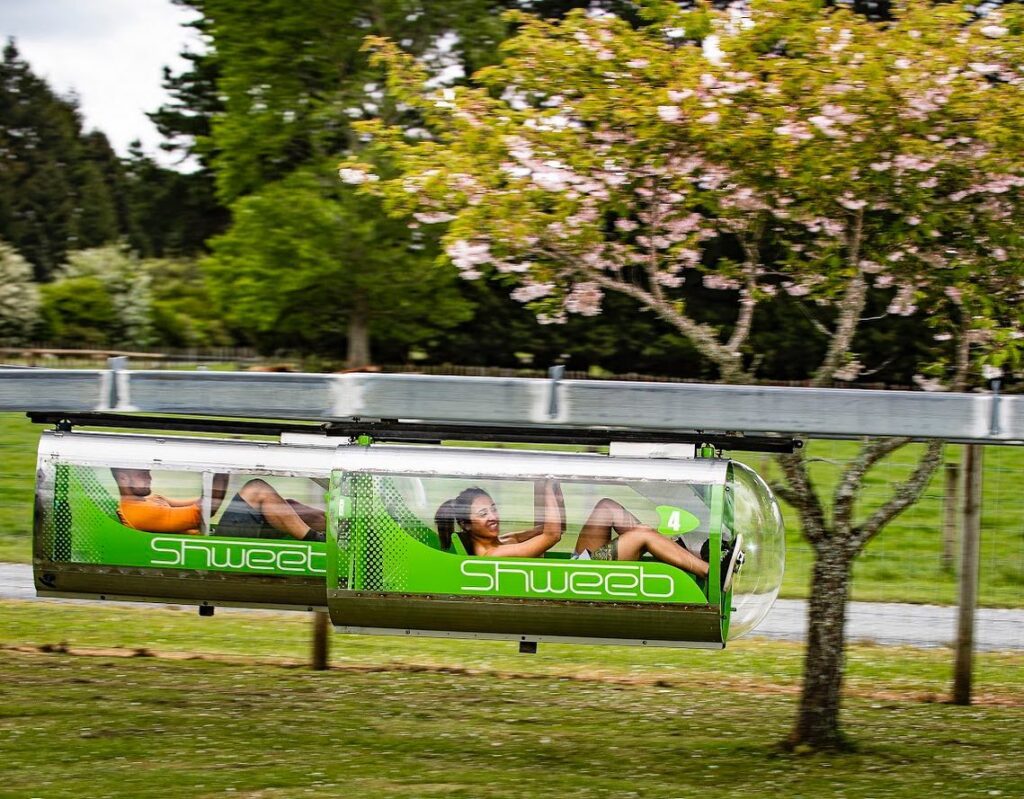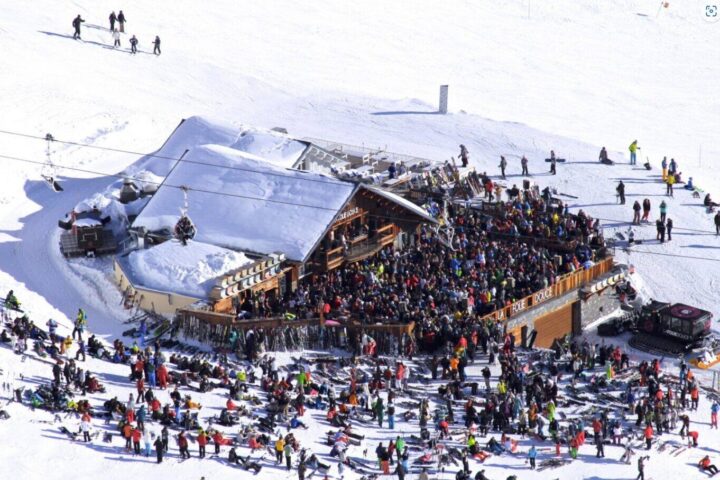Velocity Valley Amusement Park in New Zealand boasts a collection of eight adrenaline-pumping rides, with the Shweeb Racer standing out as a testament to human strength. This unique ride, the Shweeb Racer, is essentially a human-powered roller coaster, challenging participants to pedal their way to victory. Designed as suspended aerodynamic racing pods, these racers can astonishingly reach speeds of over 30 mph. The thrill intensifies as participants race against each other on a 600-meter course, spanning three exhilarating laps. For those with a competitive spirit, the current track record to beat stands at a swift 60.3 seconds.

Interestingly, the name ‘Shweeb’ originates from the German word ‘schweben’, which translates to ‘float’. Beyond the thrill, the Shweeb Racer is an eco-friendly marvel, accommodating up to two people in its pod. Rotorua, New Zealand, is home to this peculiar travel invention, with only two such attractions in the entire country. The Shweeb is more than just an amusement ride; it’s a human-powered monorail train, encapsulating riders in a capsule where they pedal themselves forward, shielded from external elements.

The brainchild of Geoffrey Barnett, the Shweeb was inspired by his numerous close calls while cycling through the bustling streets of Tokyo. Originally envisioned to transport commuters in green, cycle-powered carriages, the monorail design was hailed as the future of public transport. In a significant endorsement, Google spotlighted the Shweeb in 2010, granting the project a whopping US$1m as part of their ten-year anniversary grants. The Shweeb even drew comparisons to Elon Musk’s Hyperloop, being recognized as one of the few travel projects with the potential to revolutionize the world.
Similar Posts
Despite its initial promise and backing from tech giants, the anticipated global expansion of the Shweeb didn’t materialize beyond Rotorua. By 2018, the company behind this innovative concept, Shweeb Holdings, unfortunately, filed for insolvency. Today, the Shweeb Racer has been rebranded and finds its place not as a mainstream transport solution but as an exciting attraction at Velocity Valley. For those daring enough, the Shweeb promises speeds of up to 50kph, but only if you pedal with the vigor of an Olympian. At a price of $55, thrill-seekers can experience the world’s only human-powered Monorail Race Track in Rotorua.
Despite its challenges, the Shweeb remains a testament to New Zealand’s spirit of innovation, with its first track situated at Velocity Valley in Rotorua. The potential of the Shweeb was so compelling that out of 150,000 applications, Google chose to invest over a million dollars in it. While the Shweeb was once poised to change urban transportation, it now offers visitors a chance to race at speeds of up to 50km/h on a 200-meter track. Beyond the Shweeb, Velocity Valley is also home to the world’s first jet sprint ride and the only outdoor wind tunnel in the Southern Hemisphere.

CNN once critically questioned Google’s investment, asking, ‘Why did Google bet $1 million on Shweeb?’ Despite the skepticism, a Google spokesperson defended their investment, highlighting the high costs of innovation in public transportation and the Shweeb’s potential impact on the future. While the Shweeb’s journey from a revolutionary transport solution to an amusement park attraction is unexpected, it remains a symbol of innovation and fun. Rotorua, with its unique attractions like the Shweeb, continues to be a hub for ‘world firsts’, drawing visitors from around the globe. Whether as a transport solution of the future or an adrenaline-pumping ride, the Shweeb Racer remains an iconic part of New Zealand’s inventive spirit.
















